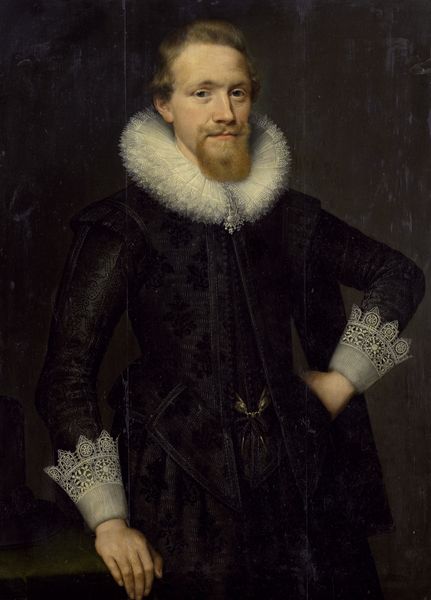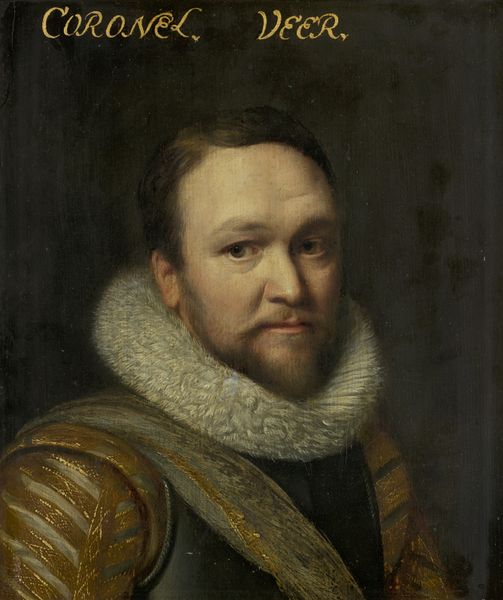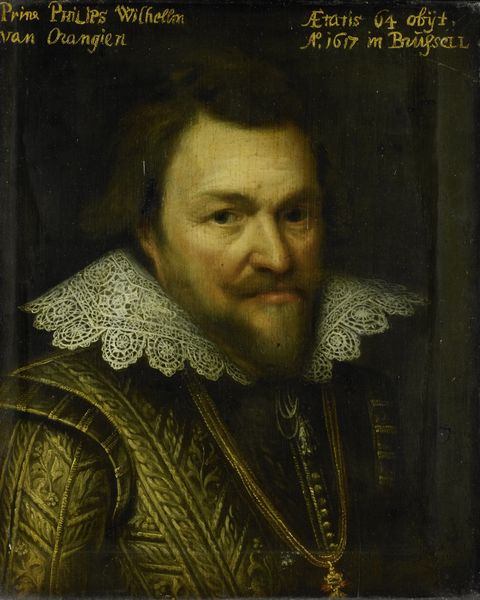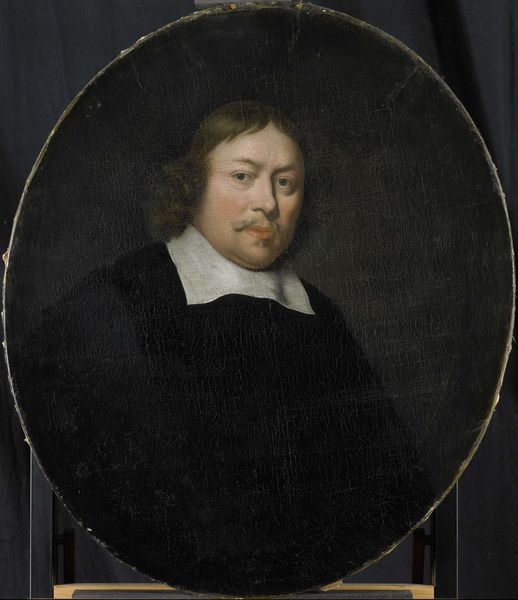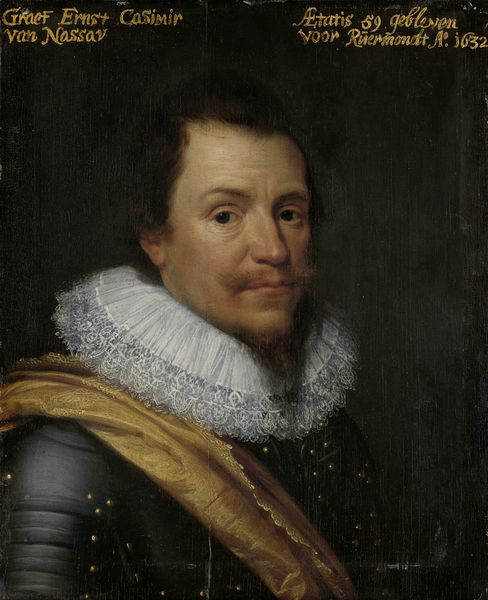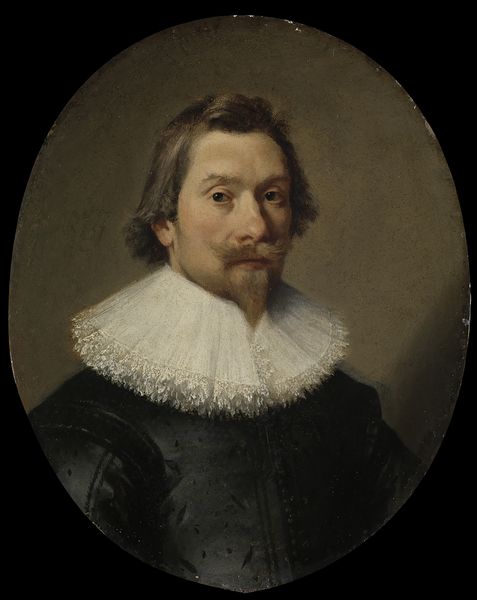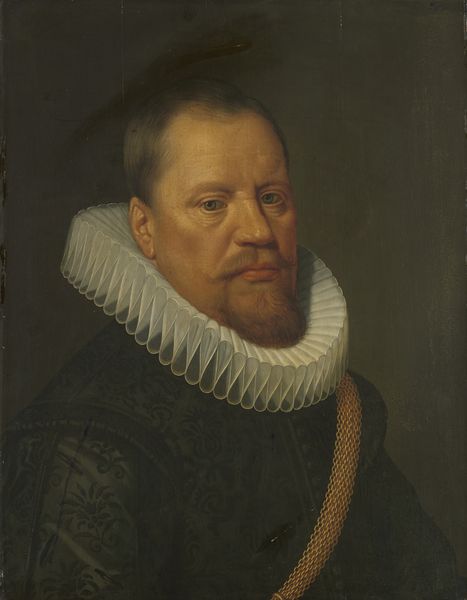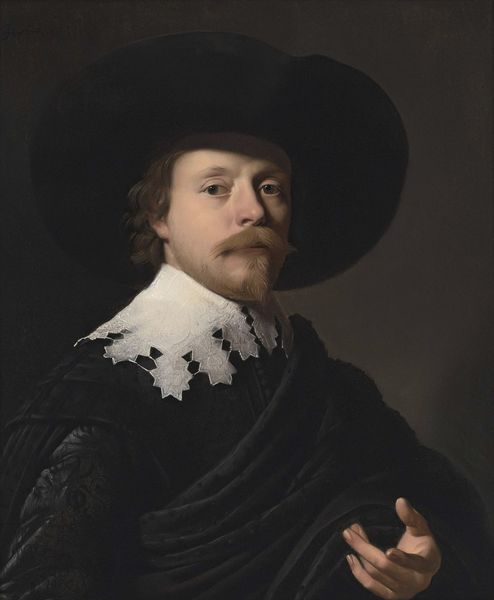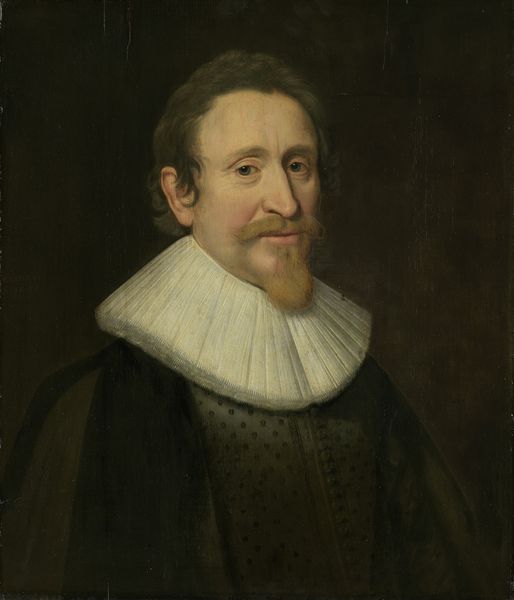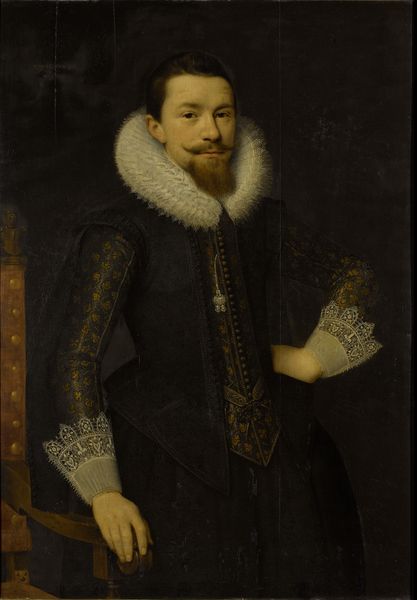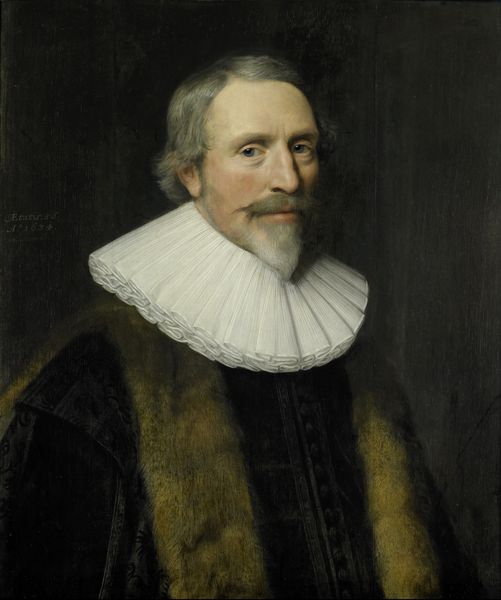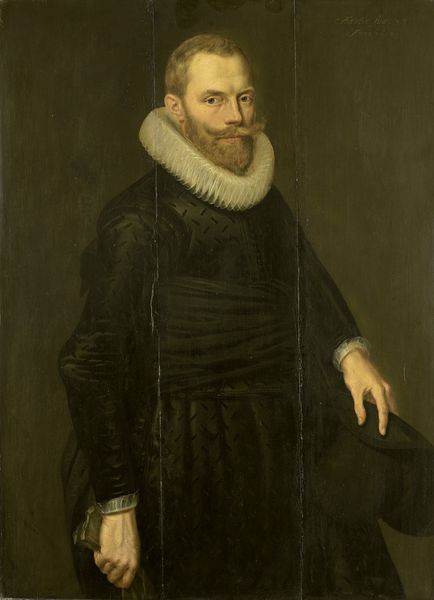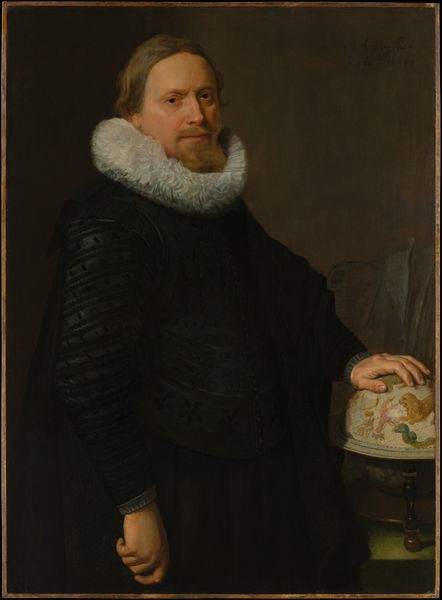
#
character portrait
#
portrait image
#
portrait
#
portrait subject
#
portrait reference
#
portrait head and shoulder
#
green background
#
facial portrait
#
portrait character photography
#
celebrity portrait
Copyright: Public domain
Curator: So, here we have David Bailly's "The Portrait of Gerrit Schaep" from 1651. Looking at the surface, it’s hard not to immediately notice the detail in his clothing, a ruff that's incredibly intricate. What strikes you most about it? Editor: That ruff, definitely. And also the robe with such detail! How long must it have taken to create the garment, not to mention the painting of it? It feels very... labor-intensive, opulent. How does the use of these materials and the clear display of wealth inform the painting's meaning? Curator: Precisely! Let's think about the Dutch Golden Age. This wasn't just about showing off wealth; it was about *how* that wealth was obtained. Consider the materials: Where did the fabrics come from? Who wove them, and under what conditions? The ruff itself is a perfect example, a testament to hours of meticulous work, a visible marker of skill and investment. How does this level of material detail situate the subject within his social sphere? Editor: So it’s less about *what* he has, but about how the acquisition and the creation of these garments reflect larger social structures and even the global trade networks of the time? The intense labor that went into it becomes part of the portrait. Curator: Exactly! Think of the consumption of luxury goods as a form of power. Bailly isn't just painting a man; he's showcasing a nexus of production, trade, and consumption. The portrait becomes a document of material culture. Does understanding this context shift how you perceive Gerrit Schaep? Editor: It definitely makes me think of him less as an individual and more as a product of, and participant in, this whole system of material production. I'm starting to see how focusing on the "stuff" in the painting opens up these bigger questions about society and economics at that time. Curator: And that, ultimately, is the power of a materialist approach – it forces us to consider the often-invisible labor and structures that underpin even the simplest of images.
Comments
No comments
Be the first to comment and join the conversation on the ultimate creative platform.
